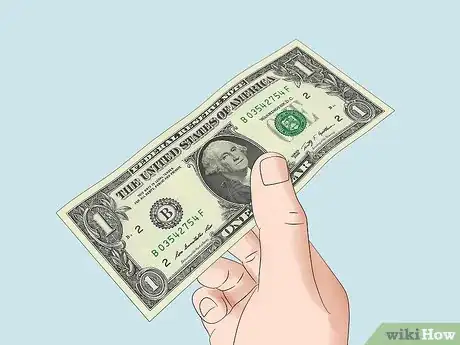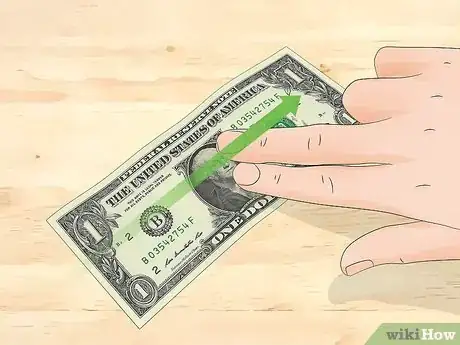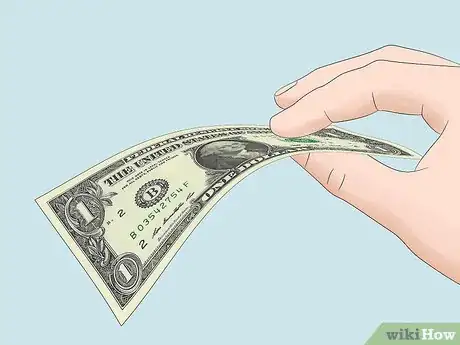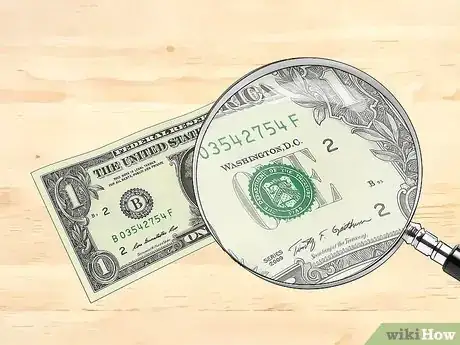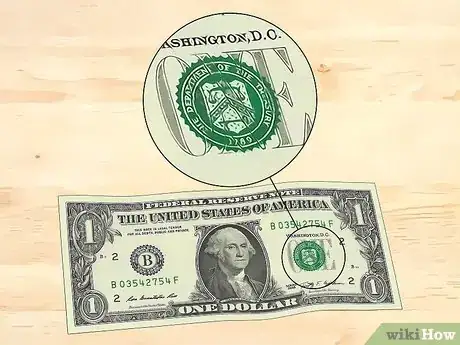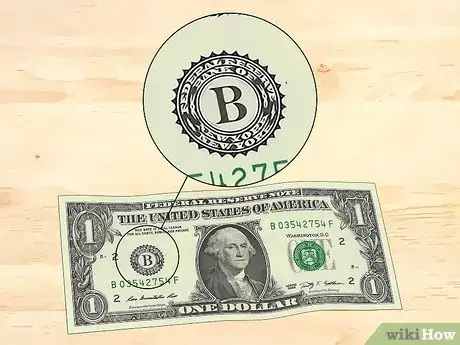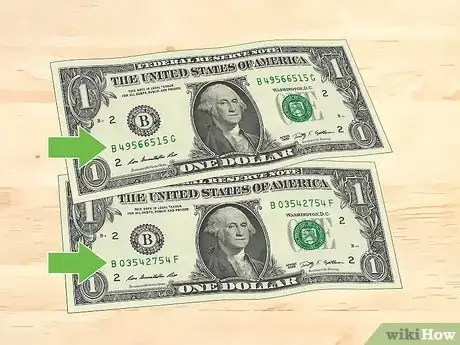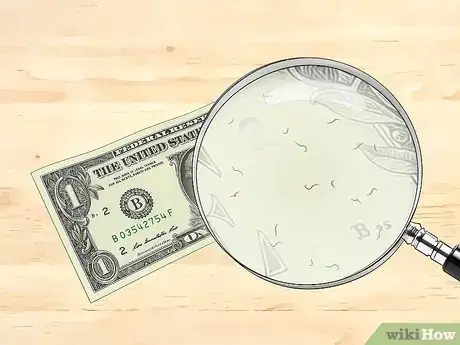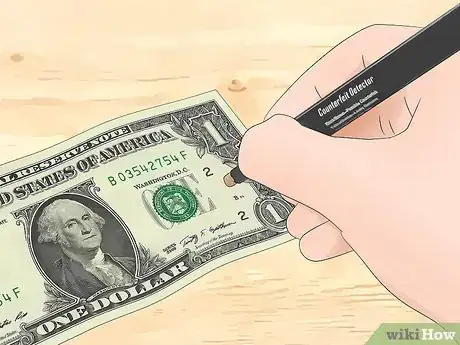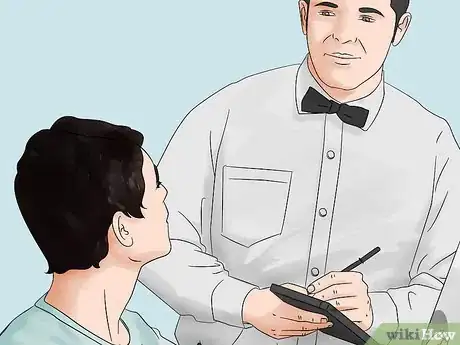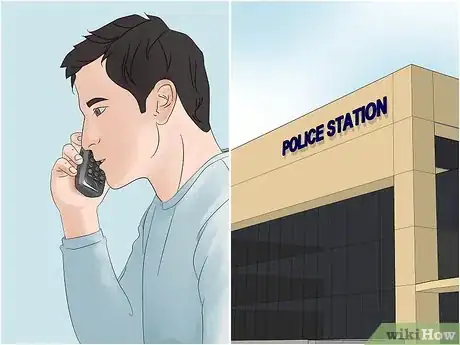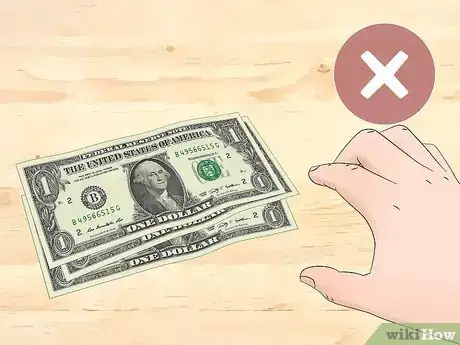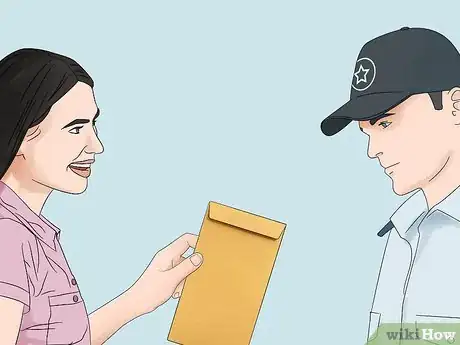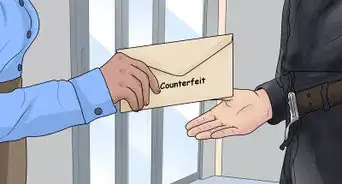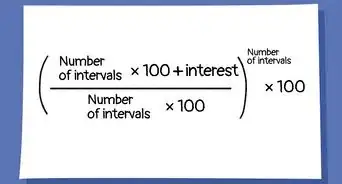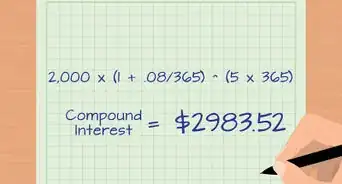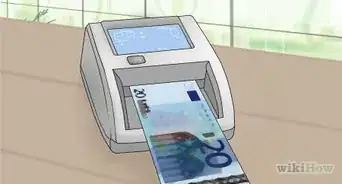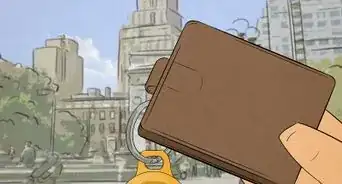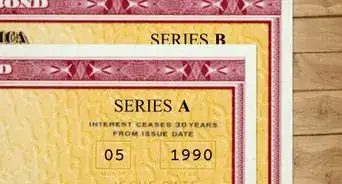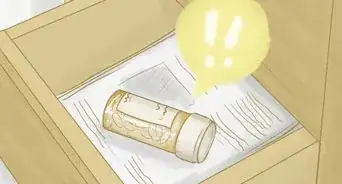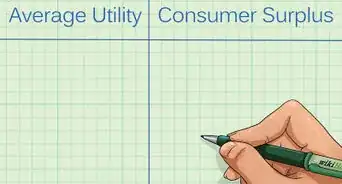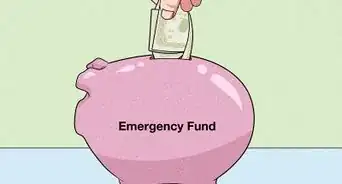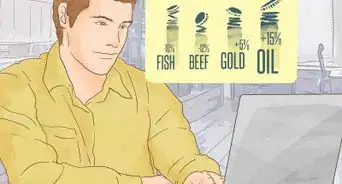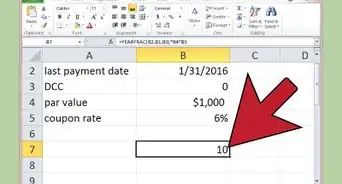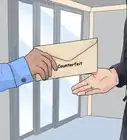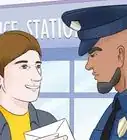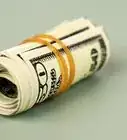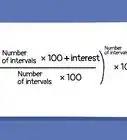X
wikiHow is a “wiki,” similar to Wikipedia, which means that many of our articles are co-written by multiple authors. To create this article, volunteer authors worked to edit and improve it over time.
This article has been viewed 93,226 times.
Learn more...
One dollar bills generally are not counterfeited because of their low value, and you probably will never encounter one. However, there have been cases of it happening.[1] [2] While a one dollar bill does not have as much security features as other bills, it does still have some. This wikiHow will teach you how to check if a 1 dollar bill is real or not.
Steps
Method 1
Method 1 of 3:
Feeling the Bill
-
1Feel the paper. US currency generally has a distinct feel that is not replicated in lower quality counterfeiting. The paper should feel rough to the touch.
- Real money is more durable than regular paper, and it should feel crisp with age, unlike regular paper, which will feel soft.
-
2Check for raised ink. One dollar bills have raised ink. You should be able to feel the texture of the ink when you run your hand over it.[3]Advertisement
-
3Evaluate the thinness of the paper. Legitimate dollars will generally be thinner than regular paper because of the printing process. You can compare a dollar bill to a regular piece of paper to see if it is thinner or not.[4]
Advertisement
Method 2
Method 2 of 3:
Looking at the Bill
-
1Look closely at the bill. Low-quality counterfeits often don't get all of the details right. Giving the bill a good look might just reveal that it's fake. If something looks off, then the bill is probably a fake.
- Comparing the bill in question to a known good one dollar bill might help you spot anything off.
- Look closely at the borders and the portrait. The borders on a real bill will be sharp and unbroken. Look for any bleeding or blurriness. On real bills, there will be no ink bleed, and the bill will have very fine details.[5]
-
2Look for the Treasury seal. Real one dollar bills will have a green treasury seal to the right of the portrait under the text, "ONE". The treasury seal should be clear and sharp.[6]
-
3Check for the Federal Reserve Bank seal. This seal is black and to the left of the portrait. The letter inside of it corresponds to a Federal Reserve Bank. Like the treasury seal, it should be clear and sharp.[7]
-
4Compare the serial numbers. If you have multiple suspicious one dollar bills, compare the serial numbers on them. Serial numbers are never repeated, so if you have multiple bills with the same serial number, then they are all fake.[8]
-
5Look for the tiny red and blue fibers. Dollar bills have very small red and blue fibers embedded in the paper of the bill. You have to look very closely to see them, and they are difficult to copy.[9]
- If you look at the bill with a magnifying glass, then you will be able to see that the fibers appear to be "raised" on legitimate bills. But, on counterfeits, the fibers will be flat on the paper.[10]
-
6Use a counterfeit detection pen. Counterfeit detection pens, while not foolproof, can still detect counterfeit bills in some cases. Directions for how to use a pen varies by manufacturer, but they will all come with instructions for how to use them.
Advertisement
Method 3
Method 3 of 3:
Reporting Counterfeit Money
-
1Remember the customer. If possible, delay whoever gave you the counterfeit money so that you can remember as much about that person’s appearance as possible. Take note of any accomplices or companions. Write down their license plate number if applicable.
- Remember that the person who gave you the counterfeit bill might not be the original counterfeiter. They might be an innocent person who thought the bill was real.
-
2Contact the police. Find your local police department or United States Secret Service field office. These numbers can be found through an online search.
-
3Avoid handling the one dollar bill. Carefully place it into a protective covering, such as an envelope or sandwich bag. This is so that the authorities will be able to gather as much information as possible from the bill. This will also help you know which bill is the counterfeit.
-
4Give the bill to the authorities. Make sure to only give the bill to a police officer or U.S. Secret Service special agent. When asked, give them as much information as possible about the bill.
- You will not be financially reimbursed for the counterfeit money. This is to prevent individuals from receiving money for free, just because they counterfeited money.
Advertisement
Community Q&A
-
QuestionDose this to apply to currency around the world or just specific dollar?
 R2_d2000Top AnswererThis only applies to US dollars. For currency in other countries, refer to the information published by the appropriate ministry or department in that country.
R2_d2000Top AnswererThis only applies to US dollars. For currency in other countries, refer to the information published by the appropriate ministry or department in that country. -
QuestionAre they still using one dollar bills?
 R2_d2000Top AnswererYes, one dollar bills are still used and produced, although many people now use credit and debit cards instead of paper currency these days.
R2_d2000Top AnswererYes, one dollar bills are still used and produced, although many people now use credit and debit cards instead of paper currency these days. -
QuestionShould the green ink run when it gets wet?
 R2_d2000Top AnswererNo, none of the ink should run in the bill gets wet. If the ink does run, then you have a counterfeit.
R2_d2000Top AnswererNo, none of the ink should run in the bill gets wet. If the ink does run, then you have a counterfeit.
Advertisement
Warnings
- Do not create counterfeit money. It is illegal to possess, produce, or use counterfeit money; if a prosecutor can prove that you planned to use the money, then you can be punished with a fine and up to 20 years in prison.⧼thumbs_response⧽
Advertisement
References
- ↑ https://www.cnn.com/2020/01/28/us/cbp-seized-shipping-container-trnd/index.html
- ↑ https://www.nydailynews.com/news/crime/finding-mr-880-case-1-counterfeit-article-1.109016
- ↑ https://currencyguide.eu/usd-en/1usd-en.html#:~:text=Here%20are%205%20easy%20steps%20to%20detect%20fake,bill.%20...%205%20Examine%20the%20serial%20numbers.%20
- ↑ https://money.howstuffworks.com/counterfeit.htm#pt3
- ↑ https://currencyguide.eu/usd-en/1usd-en.html#:~:text=Here%20are%205%20easy%20steps%20to%20detect%20fake,bill.%20...%205%20Examine%20the%20serial%20numbers.%20
- ↑ https://www.uscurrency.gov/denominations/1
- ↑ https://www.uscurrency.gov/sites/default/files/downloadable-materials/files/en/1-1963-present-features-en.pdf
- ↑ https://currencyguide.eu/usd-en/1usd-en.html#:~:text=Here%20are%205%20easy%20steps%20to%20detect%20fake,bill.%20...%205%20Examine%20the%20serial%20numbers.%20
- ↑ https://www.uscurrency.gov/sites/default/files/downloadable-materials/files/en/1-1963-present-features-en.pdf
About This Article
Advertisement
